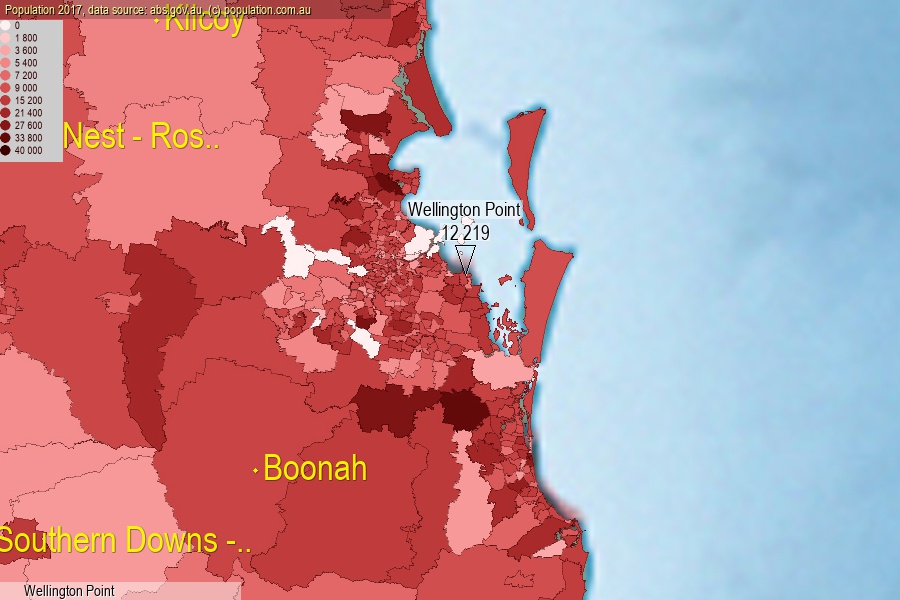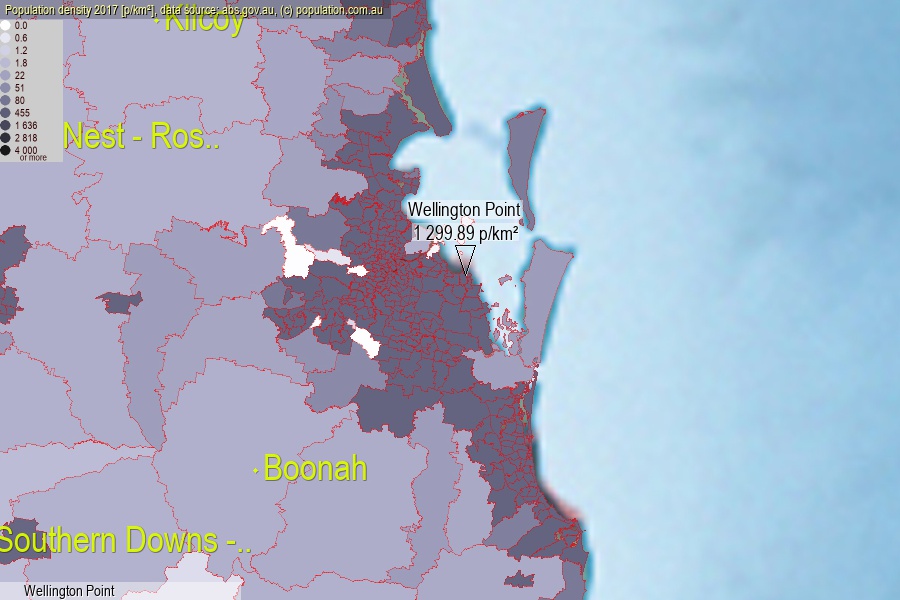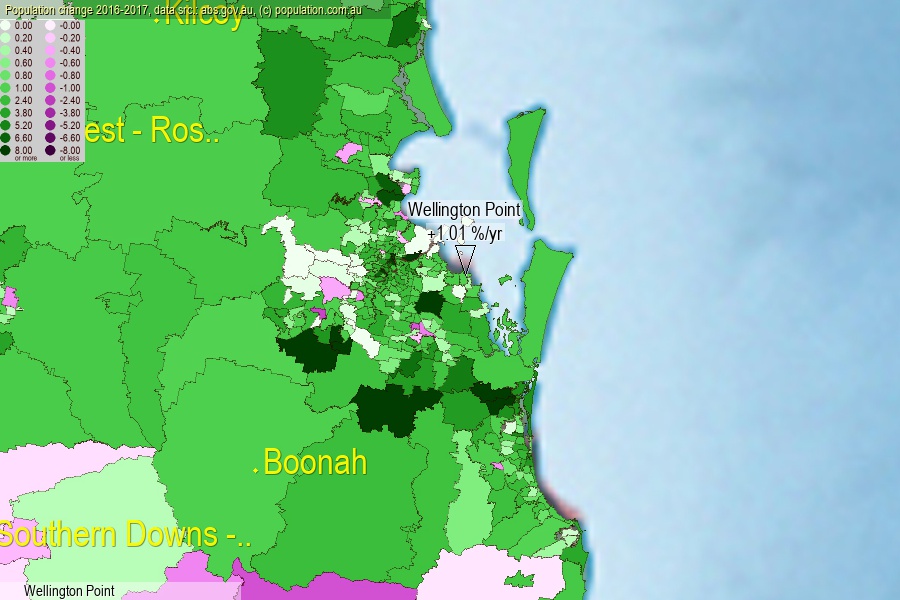 population.com.au
population.com.auLast official estimated population of Wellington Point (as Statistical Area Level 2) was 12 219 people (on 2017-06-30)[2]. This was 0.05% of total Australian population and 0.245% of QLD population. Area of Wellington Point is 9.40 km², in this year population density was 1 299.89 p/km² . If population growth rate would be same as in period 2016-2017 (+1.01%/yr), Wellington Point population in 2025 would be 13 240. [0]



Click to enlarge. Wellington Point is located in the center of the images.
Population [people], population density [p./km²] and population change [%/year] [2]
View borders » (new window) [4]
[1991-1992] +7.35 %/Yr.
[1992-1993] +5.15 %/Yr.
[1993-1994] +5.09 %/Yr.
[1994-1995] +5.17 %/Yr.
[1995-1996] +4.87 %/Yr.
[1996-1997] +3.49 %/Yr.
[1997-1998] +3.37 %/Yr.
[1998-1999] +3.82 %/Yr.
[1999-2000] +5.38 %/Yr.
[2000-2001] +8.50 %/Yr.
[2001-2002] +8.21 %/Yr.
[2002-2003] +6.63 %/Yr.
[2003-2004] +3.43 %/Yr.
[2004-2005] +1.51 %/Yr.
[2005-2006] +1.69 %/Yr.
[2006-2007] +1.68 %/Yr.
[2007-2008] +2.83 %/Yr.
[2008-2009] +1.96 %/Yr.
[2009-2010] +1.07 %/Yr.
[2010-2011] +1.27 %/Yr.
[2011-2012] +2.28 %/Yr.
[2012-2013] +0.88 %/Yr.
[2013-2014] +0.39 %/Yr.
[2014-2015] +1.48 %/Yr.
[2015-2016] +0.98 %/Yr.
[2016-2017] +1.01 %/Yr.
[0] Calculated with linear interpolation from officially estimated population
[1] Read more about SA2 and Australian Statistical Geography Standard (ASGS) on abs.gov.au
[2] Population data from Australian Bureau of Statistics (Population and density: 2017; change: 2016-2017)
[3] Digital Boundaries: Australian Statistical Geography Standard (ASGS) 2016.
[4] Border coordinates are simplifyed using Ramer-Douglas-Peucker algorithm.